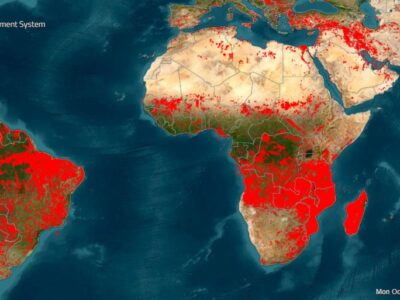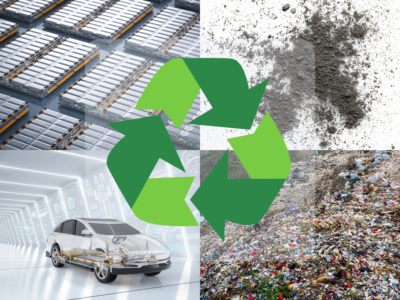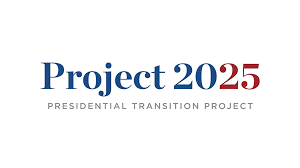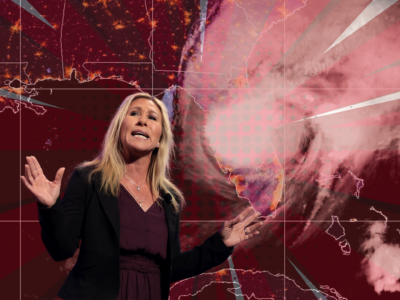Six Sleeper Proposals in Project 2025
Project 2025 isn’t just its headline proposals. It’s a thorough, detailed attack on environmental protection.
The Project 2025 report is 920 pages long, but only a few portions have gotten much public attention. The report’s significance is precisely that it goes beyond a few headline proposals to set a comprehensive agenda for a second Trump Administration. There are dozens of significant proposals relating to energy and the environment. Although I can’t talk about all of them here, I want to flag a few of these sleeper provisions. But does Project 2025 even matter, you ...
CONTINUE READINGNew Environmental Laws Focus on Public Health
Many of the environmental-focused bills that the governor signed this year involve ways to alleviate the health disparities faced by frontline communities.
The California State Legislature is now finally in its off-season. Governor Newsom had until Monday, September 30th to sign or veto bills that the legislature passed and sent to his desk. In a final tally of bills, according to CalMatters, Governor Newsom vetoed approximately 18% of the nearly 1,000 bills that landed on his desk in the final days of session, or close to 1 in 5 bills. Taking into consideration all the bills presented throughout the year, the overall veto ...
CONTINUE READINGThe Dangerous Embrace of Convenient Narratives Over Inconvenient Truths
As it turns out, Nature doesn’t care what stories you post on social media or spin on TV.
Conservative critics and others have argued for years that theories popular in universities such as critical legal theory undermine the idea of truth in favor of storytelling. Ironically, it has turned out that the problem is far greater on the Right than the Left. This is not only destructive to democracy. It also encourages conspiracy theories and hate speech, like a recent spate of antisemitic attacks on officials at FEMA. The problem on the Right has long been...
CONTINUE READINGGovernors Present Bold Vision for Investing in a New Forest Economy
As global leaders gather in Cali for COP16 and devastating fires continue across the Amazon, we should look to subnational groups for solutions to both the climate and biodiversity loss crisis.
The world has continued to watch as fires burn – yet again - across much of the Amazon basin. With historic droughts and ongoing lack of resources to tackle these fires and their underlying causes, they have ravaged millions of hectares of forests, communities, and wildlife habitat in Bolivia, Peru, Brazil, and beyond. These fires, often deliberately set as part of land clearing efforts for cattle or agriculture, are becoming even more intense in the face of the climat...
CONTINUE READINGWe Need a Circular Economy for EV Batteries
California got close to making suppliers ensure EV batteries are managed responsibly at end of life. Here’s why 2025 should be the year California creates a circular economy for EV batteries.
California continues to make significant headway toward its target to eliminate in-state sales of new internal combustion engine vehicles by 2035. About one in five new cars sold in California are battery-powered. And it’s not just California: Battery-powered car sales are up globally, with projections showing 17 million will be sold worldwide in 2024. As EVs proliferate, so will demand for the critical minerals that power their batteries. But mining for those e...
CONTINUE READINGStill Crazy After All These Years
There's been an alarming growth of conspiracy theories, often antisemitic ones, to explain extreme weather events.
Was a powerful political conspiracy behind Hurricane Helene? You might think that no one would believe anything that crazy. You would be wrong. This post by a conspiracist about Hurricane Helene got 11 million views: “Don’t worry guys, weather modification isn’t real! It’s just a coincidence that Hurricane Helene is one of the most devastating 'inland damage storms' in history and that hundreds of pro-Trump counties are being massively impacted during the m...
CONTINUE READINGProject 2025 Envisions Eliminating Civil Service Protection for Thousands
Paper #1 in Monograph Series
UC Berkeley’s Center for Law, Energy, & Environment (CLEE) is sponsoring a series of papers evaluating aspects of Project 2025, The Heritage Foundation publication, entitled “Mandate for Leadership: The Conservative Promise,” which has received attention in the Presidential election campaign. CLEE published excerpts from the 922 page Project 2025 document related to climate change and environment, here. The first paper in our Monograph series focuses on...
CONTINUE READINGGrid Experts Weigh in on EPA’s Power Plant Emissions Rule
The U.S. Supreme Court denied an emergency stay in West Virginia v. EPA, a challenge to EPA’s rule. Our UCLA Law clinic submitted a brief on behalf of grid experts in the case at the D.C. Circuit.
Earlier this year, the U.S. Environmental Protection Agency finalized emissions standards for greenhouse gases from power plants under Clean Air Act, Section 111(d). The rule sets pollution limits for existing coal plants and some new gas plants based on carbon capture and sequestration. In West Virginia v. EPA, a spate of states and industry parties have challenged these new standards. One argument made by petitioners involves reliability of the nation’s powe...
CONTINUE READINGWhy is EPA “Faceless”?
People complain about faceless bureaucrats. At least in part, that could be fixed.
How many people can name the head of EPA or even know the official title of that office? About 5% of the population, would be my guess. Apart from Scott Pruitt, who became famous for his $20,000 phone booth, few people outside of the field could name any previous holder of the office. Michael Regan seems to be doing a great job there right now, but hardly anyone knows his name, and hardly anyone had heard of him before his appointment. I’d bet that even among membe...
CONTINUE READINGReflections on “Yes they can control the weather.”
Marjorie Taylor Greene is wildly wrong about government scientists controlling hurricanes. There is a rich history of weather modification experiments that make that false claim more dangerous.
Since U.S. Rep. Marjorie Taylor Greene tweeted earlier this month that “Yes they can control the weather” — a bunch of commentators have pointed out that she’s wildly wrong. Yes, she’s wildly wrong. No one can make, intensify, or steer hurricanes. No ability to do anything like this is even on the horizon. Her comment obviously got traction because it plugged into a deep strain of populist paranoia, including active, current conspiracies. But it’s also...
CONTINUE READING











